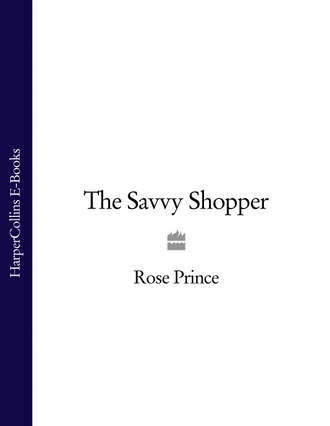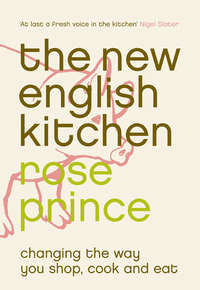
Полная версия
The Savvy Shopper
• Hamburgers—the meat used must be pork, beef or a mixture and the burger must contain at least 80 per cent meat, with 65 per cent of that being lean meat.
So what else is in burgers?
Fat can be added, and you will know it is there because much will run, or render, during cooking, leaving a very thin burger. If offal is added, it must be itemised on the label, but you are unlikely to find it in shop-bought burgers. Mechanically recovered meat (MRM) may be present. This is a deeply unpleasant paste made up of meat scraps recovered by suction from the carcasses of beef, lamb and pork. However, public revulsion for products like MRM makes it a more likely ingredient in caterers’ burgers. Until 1996 MRM could contain beef spinal cord but since BSE any material that could pose a risk to humans is removed.
Where does the beef in the burger come from?
Most burgers are made from beef, although lamb, venison and pork burgers are also available, often from specialist butchers. The beef in commercial burgers is likely to be from the 50 per cent consumed in the UK that is derived from the dairy industry. Male calves, clearly unwanted at dairy farms, are reared for beef, although they will never match the specialist beef breeds in quality. They will often be reared indoors or in yards, and grow quickly on a diet containing high levels of concentrated feeds and silage. They are finished (fattened up) as quickly as possible. Transport to slaughter may well involve long journeys in close confinement, increasing stress and the risk of infectious diseases such as pneumonia.
Does the welfare of livestock affect the flavour of
beef burgers?
It is nothing like as important as it is with beef that is reared to be the Sunday roast, because the beef is minced, doing away with the need to take steps to ensure tenderness, a good ‘marbling’ of fat or good-sized roasting joints. It has been proven, however, that poor standards of welfare and increased stress levels in livestock alter the PH balance in the meat, which affects both flavour and tenderness.
Can I tell from the label how the animal was reared?
Beef labelled ‘naturally reared’, ‘free range’, ‘grass fed’ or ‘organic’ should hail from welfare-friendly systems. If no information of this kind is given on labels (or on posters and leaflets in butcher’s shops) you can surmise by their omission that the burger you are buying has come from an intensive bull-beef system. All shops need to provide more information at the point where beef is sold. The Soil Association logo is a guarantee of good welfare but conventional farms can have excellent systems, too.
Is the beef in the burger British?
It is good to know that it usually is, because intensive systems in exporting countries fall short of our standards. Beef labelling laws insist that the country of origin is marked on packs—but watch out for some clever marketing. Some exporting countries are rearing British breeds such as Aberdeen Angus and mark this on labels to make the burgers look British. Turn the pack over and you will see the words ‘Britain, Ireland and South America’ in the country of origin box on the official label, indicating that the Aberdeen Angus breed was reared abroad.
Where does imported beef for burgers come from?
We import about a third of the beef we eat, including beef from Ireland, which most UK consumers feel is British. But we also import from other European countries, especially Holland. Outside the EU, the main exporting countries are Brazil and Argentina, plus some African countries. They have to pay a levy to export, so the economics do not always work well for them, and supply is erratic.
Burgers can contain a mixture of British and imported meat. In 2005, inspectors from Quality Meat Scotland (a trade organisation that promotes Scottish meat—it must be said) found traces of low-grade beef in burger samples taken from retailers. They also DNA-tested samples on sale in Scotland, revealing that all contained Zebu genetics—meaning the beef is from Bos Indicus cattle, which are specially bred for tropical climates but whose meat has a low eating quality.
Are there GMOs in beef burgers?
UK-reared livestock can be given GM feed and this does not need to be declared on the label. The manufacturers argue that the GM feed travels through the body of the animal and no genetic material is absorbed. The environmental sector remains very uncomfortable with this.
What else is in burgers?
All burgers, especially economy burgers (see above) can be bulked out with cereal. There would be nothing wrong with adding a pure cereal—in the Middle East, lamb patties are made more delicious with the addition of cracked bulgar wheat—but the cereal bulk in most burgers is either tasteless rusk or breadcrumbs, and both contain additives. These include yeast extract (very popular among burger makers) as a flavouring, wheat protein, wheat flour, pea fibre, onion powder, soya protein isolate, fat (usually beef), plus sodium metabisulphite (E223), sodium sulphite (E221), neither of which is recommended for children, and the stabiliser sodium phosphate (E339) (which can be used as a laxative). Burgers may also contain hydrolised vegetable protein (HVP), a plant-based flavouring (usually soya) that has been chemically altered to imitate the flavour of meat. HVP has been found to contain the carcinogen chloropropanol, sometimes called 3MCPD.
What the supermarkets say
Waitrose stocks both organic and conventional burgers, both made using forequarter cuts of meat sourced from the UK. The beef content of each product varies from 92 to 99 per cent. The cattle that supply the beef are fed a GM-free diet.
Tesco’s beef burgers are 82 per cent beef and made from forequarter trim cuts from beef sourced from the UK and the Republic of Ireland. It did not indicate if the cattle are fed GM material. Tesco does not sell an organic range.
Marks & Spencer sells burgers made from forequarter beef sourced from Scotland, England and Northern Ireland. Their burgers are 94 per cent beef. The meat comes from suckler herds naturally reared on their mothers for six months, then fed on a forage-based diet.
Конец ознакомительного фрагмента.
Текст предоставлен ООО «ЛитРес».
Прочитайте эту книгу целиком, купив полную легальную версию на ЛитРес.
Безопасно оплатить книгу можно банковской картой Visa, MasterCard, Maestro, со счета мобильного телефона, с платежного терминала, в салоне МТС или Связной, через PayPal, WebMoney, Яндекс.Деньги, QIWI Кошелек, бонусными картами или другим удобным Вам способом.








